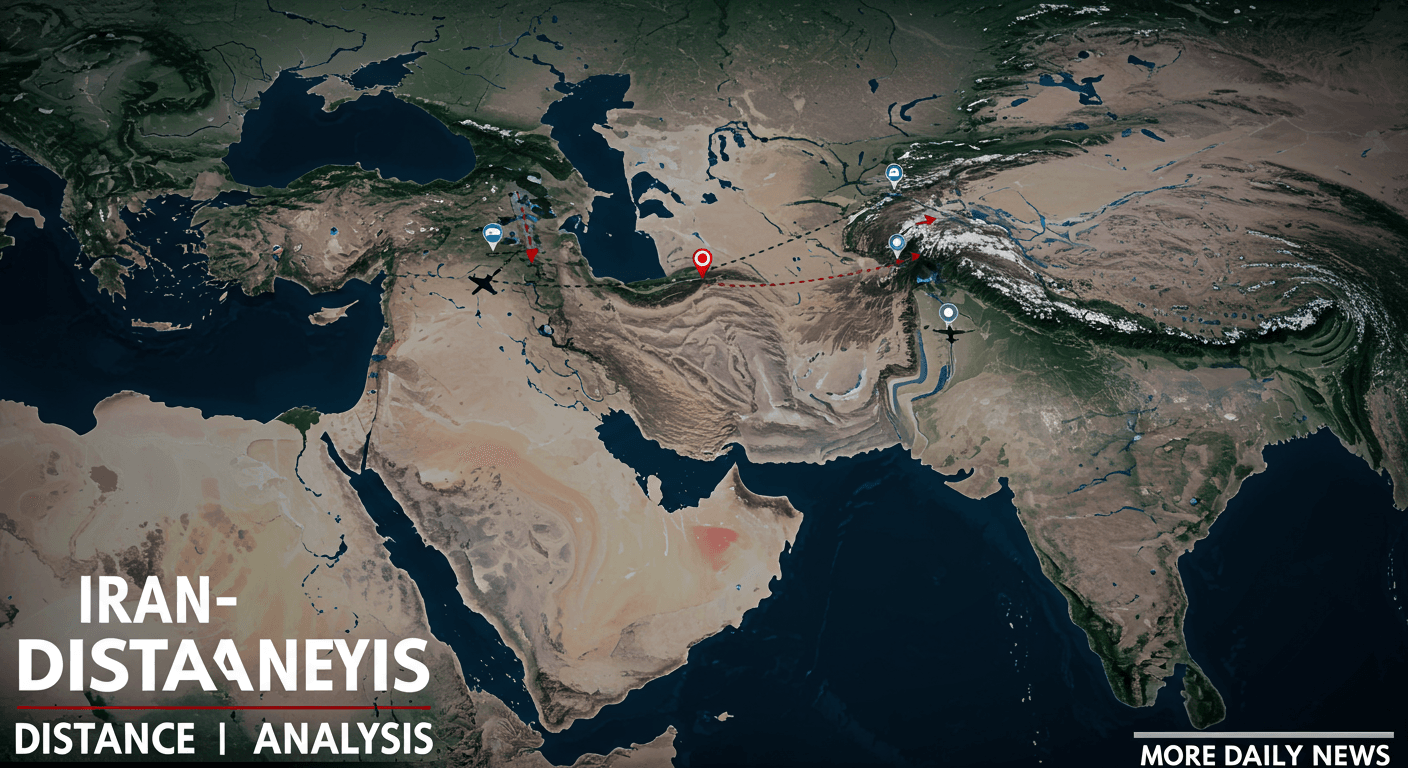How Far is Iran from Israel? Understanding the Geographic and Strategic Distance
The Numbers: Geographic Distance
Straight-Line Distance
Using GPS coordinates, the distance between Tel Aviv (31.04605°N, 34.85161°E) and Tehran (32.42791°N, 53.68805°E) is approximately 988 miles (1,589 km) “as the crow flies.” From Jerusalem to Iran’s capital, it extends to 1,083 miles (1,743 km). These figures represent theoretical minima, while actual travel navigates regional barriers.
Flight Paths and Air Travel
No direct flights connect Ben Gurion Airport and Iranian hubs like Shiraz International Airport. Typical routes involve connections through Dubai, extending journeys beyond 1,508 miles with flight duration averaging 8 hours. Airspace restrictions prevent direct paths even at optimal airplane speed.
Driving Distance (Theoretical)
An overland route would cover 1,770 km through Iraq and Jordan, passing near Baghdad and Damascus. However, overland travel feasibility remains negligible due to security concerns and closed borders across bordering countries.
Geographic Context and Barriers
Countries in Between
Iraq functions as the primary buffer state, while Syria and Lebanon create alternative corridors. The Persian Gulf and Strait of Hormuz form critical maritime boundaries, with the Suez Canal influencing naval access. This complex geography defines West Asia‘s regional dynamics.
Natural Barriers
Iran’s Zagros Mountains establish natural defenses, while desert regions restrict movement. Water bodies necessitate maritime detour options for trade. Altitude variations between coastal and inland areas further complicate transit.
Strategic and Military Implications
Military Significance
The distance falls comfortably within missile range capabilities, fueling security concerns about existential threats. This proximity directly influences military posture and missile defense systems deployment.
Buffer Zones and Proxies
Iraq serves as a contested buffer, while groups like Hezbollah in Lebanon and Hamas represent proxy forces in Iran’s “axis of resistance.” The PLO (Palestine Liberation Organization) also factors into regional equations.
Historical Context
Historical relations between Israel and the Islamic Republic of Iran shifted dramatically post-1979. The distance enabled competition through proxy conflicts, with regional instability concentrated in intervening territories.
Modern Transportation and Communication
Despite physical separation, technology bridges the gap via satellite communications and cyber capabilities. Diplomatic relations constraints make virtual connections increasingly vital. Trade routes operate through third countries like the UAE, with flight layovers in Dubai remaining common.
Comparative Analysis
Globally, the Israel-Iran distance is relatively short:
- India-Pakistan: 430 miles
- US-Russia (Bering Strait): 55 miles
This proximity intensifies security concerns in the Middle East.
Conclusion
The approximately 1,000 miles between Israel and Iran represents a geopolitical fault line shaped by map coordinates, regional dynamics, and geopolitical tensions. From flight calculators showing circuitous routes to missile trajectories covering the distance in minutes, this gap continues to define one of the world’s most consequential relationships. Understanding both geographical and strategic dimensions explains why these neighbors remain worlds apart.

